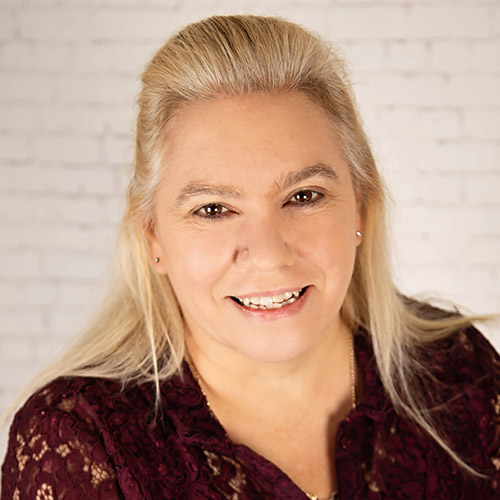Christina Parker

Associate Professor Parker is an academic with a wealth of clinical skills in hospital, aged and community settings, having been a Registered Nurse for thirty years, including fifteen years working clinically across hospital and community settings.
In practice she has developed advanced clinical skills in community, primary and public health care; knowledge and skills in relation to ageing, acute and chronic medical conditions.
She leads a wound healing research team at Queensland University of Technology and has contributed to four book chapters, published 32 peer-reviewed journal articles and presented 34 oral or poster conference presentations (8 internationally and 26 nationally), including six as invited speaker.
Presentation at The Society of Tissue Viability 2023 Conference
Predicting venous leg ulcer healing
Objectives
After attending this session, persons will be able to:
- Identify factors related to delayed healing for venous leg ulcers
- Understand the development and testing of a new risk assessment tool for delayed healing of venous leg ulcers
Abstract
Aim: Despite advances in wound care, chronic venous leg ulcers still pose a considerable burden and contribute to high health care costs. At present, clinicians around the world utilise their own expert judgement when considering whether a venous leg ulcer will be difficult to heal. We have published a screening tool to assist clinicians to detect leg ulcers at-risk of delayed healing and have internationally validated this tool for early identification of those at risk of delayed healing of venous leg ulcers by 24 weeks.
Methods: A 10-item tool including socio-demographic, venous history, ulcer and lower limb characteristics, compression and mobility items to determine the risk of delayed healing of venous leg ulcers has previously been developed and validated in Australia. This tool was prospectively validated using Area Under the Receiver Operating Characteristic (ROC) Curve (AUC) analysis in the international populations of United Kingdom (UK), Austria and New Zealand.
Results: One hundred and forty-one participants were recruited internationally. Participants enrolled from one hospital clinic in UK (n=43, 30.5%), one hospital clinic in Melk, Austria (n=14, 9.9%) and two community clinics in New Zealand (n=84, 59.6%). Seventy per cent (n=96) healed by 24 weeks, while 30% (n=41) had not healed. The validation in UK, Austria and New Zealand has indicated that the model has moderate discrimination and goodness-of-fit with an AUC of 0.74 (95% CI, 0.66-0.82) for the total risk assessment score.
Discussion: This innovative risk assessment tool for early detection of risk of non-healing in venous leg ulcers has been tested for validity and reliability. The validation of this risk assessment tool offers a simple, easy to use tool for all clinicians to determine realistic outcomes for their patients and guide early clinical decision making for alternative, tailored interventions to address the specific risk factors and thus promote early healing.
Free Paper Presentation (Research category) at The Society of Tissue Viability 2023 Conference
Healthcare students’ experiences of a Collaborative Online International Learning initiative on wound care and interprofessional education: an exploratory study
Abstract
Background – Interprofessional practice has been identified as essential to designing and delivering health services that are safe, efficient, and sustainable. The importance of effective interprofessional practice is exemplified in the care of a person who has a complex wound, where the expertise of a range of healthcare professionals optimises health outcomes. Effective preparedness of health professional graduates to engage in successful team-working and shared decision-making are profiled as key proficiencies in healthcare programmes (WHO, 2010). In addition, internationalisation of learning offers opportunities to consider the global context of healthcare policy and practice (Mihut et al. 2013). While a range of initiatives are developed to support online or distance learning in wound care and interprofessional learning, there is little evidence of the impact of collaborative online international learning (COIL) in this area (Martinengo et al. 2020). Using a global classroom approach, this study explored healthcare students’ experiences of a COIL initiative on interprofessional practice in complex wound care.
Methods – The study used a descriptive exploratory design. A convenience sample of undergraduate healthcare students from Queensland University of Technology (QUT, Australia) and Ulster University (UU, N. Ireland) participated in a COIL initiative which comprised a 2-hour online global masterclass facilitated by two expert tissue viability nurses. Evaluative data were collected using a post-masterclass anonymous online survey, analysed using descriptive statistics. Four online focus groups were facilitated. Data were audio-recorded, transcribed and analysed using thematic analysis. Relevant ethical approvals were obtained
Results – Sixty-eight students took part in the masterclass and twenty-two completed the post-masterclass survey (QUT n=3; UU n= 19; 32% response rate). Participants reported improvements in their understanding of wound assessment and management and how a range of professionals contribute to wound care, awareness of clinical guidelines in wound care, and increased confidence in wound assessment. Participants also reported positive feedback on the benefits of COIL.
Conclusion – Healthcare students who engaged in an online international, interprofessional education collaboration demonstrated improved understanding and awareness of complex wound care alongside developing insights into interprofessional working and international healthcare policy.
References
- Martinengo, L., Yeo, N.J.Y., Markandran, K, D.O., Olsson, M., Kyaw, M.B., and Tudor Carr (2020) Digital health professions education on chronic wound management: A systematic review. International Journal of Nursing Studies, 104, 103512 https://link.edgepilot.com/s/0cb39bcf/MvucrrOuaE_NiFD3tbAIqQ?u=https://doi.org/10.1016/j.ijnurstu.2019.103512
- Mihut, G., Altbach, P.G. and De Wit, H. (2013) Understanding Higher Education Internationalization. Global Perspectives on Higher Education. Rotterdam: SensePublishers.
- World Health Organisation (2010). Framework for action on interprofessional education and collaborative practice. Available from: https://link.edgepilot.com/s/a65a5b5e/xznz_TIKBECSQqntor2Cmw?u=http://apps.who.int/iris/bitstream/handle/10665/70185/WHO_HRH_HPN_10.3_eng.pdf%3Bjsessionid=3656EDA264650E3DCF7A5CB70C903D47?sequence=1 [Accessed 8th February 2023].














